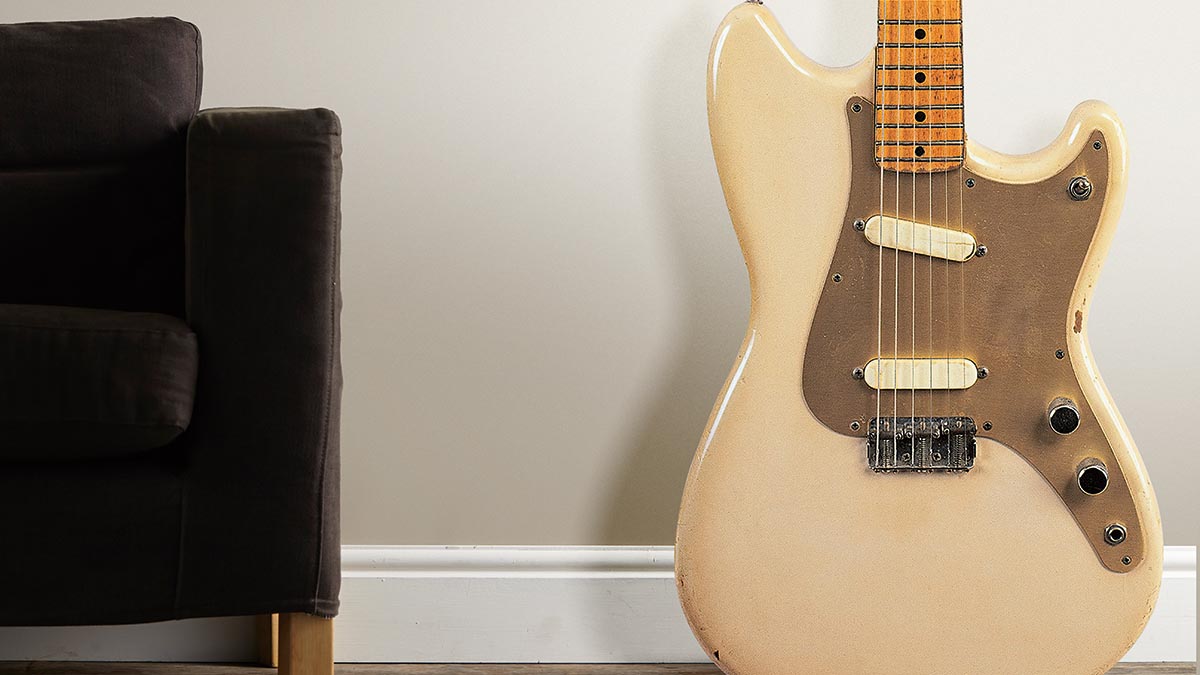In praise of the Fender Duo-Sonic, the electric guitar for students that the pros grew to love
Compact, fun, playable and affordable – and loved by Jimi Hendrix – the Duo-Sonic remains Fender's slept-on classic

As far back as 1946, when it evolved from the K&F lap-steel/amp company, Fender was aiming products at music students. Prior to the 1950 launch of their game-changing “electric Spanish” guitars, the Esquire and Broadcaster, the firm continued to focus on lap-steel guitars and guitar amps, branding products with aspirational names such as Champion and Princeton.
However, by the mid-’50s, the solidbody electric guitar had gained traction, with the Telecaster and Stratocaster leading the professional market. As the rock ’n’ roll era ushered in a new generation of players, Leo Fender’s business partner Don Randall thought it wise to expand their catalogue to include less expensive student-model equivalents.
By 1955, a plan was hatched to build shorter scale solidbody electric guitars. Named the Musicmaster and Duo-Sonic by Randall, these 22½-inch-scale student models entered production in 1956.
The single-pickup Musicmaster appeared in April ’56, followed by the dual-pickup Duo-Sonic in June ’56. At this point, both models featured Strat-style single-coil pickups with white plastic covers and a comparatively smaller body finished in Desert Sand.
Simplified hardware included Kluson tuners with white plastic buttons and a bespoke bridge featuring Tele-style steel saddles. Also borrowed from the Telecaster were a pair of knurled knobs for volume and tone control. The Duo-Sonics sported an additional three-way pickup selector switch located adjacent to the treble cutaway.
“It is especially designed for adults and young musicians with small hands,” reads the catalogue. “The Duo-Sonic guitar is striking in appearance with gold-finished pickguard and chromed controls and bridge cover.”
The Duo-Sonic may well have been designed for adults and young musicians with small hands, but that didn’t stop a famously large-handed Jimi Hendrix using one during his Isley Brothers days. Hendrix was photographed with a later model featuring a rosewood fretboard.
Get The Pick Newsletter
All the latest guitar news, interviews, lessons, reviews, deals and more, direct to your inbox!

As per the rest of the Fender electric guitar line, Duo-Sonics changed from fretted maple necks to rosewood ’board necks in ’59.
At the same time, the original Desert Sand finish was replaced by an unnamed tan colour with a pink tint. Meanwhile, the gold anodised pickguard changed to a cream-coloured plastic, while the pickup covers were updated from white to brown.
1956: Duo-Sonic released; fretted maple neck; Desert Sand finish; white pickup covers; gold anodised pickguard
1959: Rosewood fretboard; pink-tan finish; brown pickup covers; cream pickguard
1961: Shaded Sunburst finish
Mid-1963: Red Mahogany (w/white pickguard) and White (w/tortoiseshell pickguard) finishes
Autumn 1963: White (w/brown pickguard) finish
1964: Mustang styling; “Duo-Sonic II” decal; Red, White and Blue finishes; 22 ½-inch and 24-inch scale length
1969: Discontinued
Current: Fender Player Series Duo-Sonic and Duo-Sonic HS
In ’61, Fender decided to spruce up the Duo-Sonic with a unique Shaded Sunburst finish. Unlike the other three-tone sunbursts of the professional models, the Duo-Sonic featured a maroon outer (as seen for a short while on the sides of the Esquire and Telecaster Customs).
Further tweaks to the design were implemented in ’63 when the Shaded Sunburst paint-job was superseded by White and Red Mahogany. As per the name, Red Mahogany guitars were made with mahogany, though this was supplanted by poplar in ’64.
1964 brought a swathe of changes to the Duo-Sonic following the introduction of the vibrato-equipped Mustang that year. Before long, the Duo-Sonic had inherited the Mustang’s new pickguard design, chrome control plate, pickup slider switches, flared headstock and offset body.
Like the Mustang, the Duo-Sonic was then offered in a choice of Red, White and Blue finishes. Available in both 22½- and 24-inch scale versions, it was discontinued by the end of the decade.
The model returned to the main Fender line in 2016 with the Offset Series, which has nowadays been amalgamated into the Player Series, with both Duo-Sonic and Duo-Sonic HS options available.
Rod Brakes is a music journalist with an expertise in guitars. Having spent many years at the coalface as a guitar dealer and tech, Rod's more recent work as a writer covering artists, industry pros and gear includes contributions for leading publications and websites such as Guitarist, Total Guitar, Guitar World, Guitar Player and MusicRadar in addition to specialist music books, blogs and social media. He is also a lifelong musician.
“It holds its own purely as a playable guitar. It’s really cool for the traveling musician – you can bring it on a flight and it fits beneath the seat”: Why Steve Stevens put his name to a foldable guitar
“Finely tuned instruments with effortless playability and one of the best vibratos there is”: PRS Standard 24 Satin and S2 Standard 24 Satin review



![A black-and-white action shot of Sergeant Thunderhoof perform live: [from left] Mark Sayer, Dan Flitcroft, Jim Camp and Josh Gallop](https://cdn.mos.cms.futurecdn.net/am3UhJbsxAE239XRRZ8zC8.jpg)








